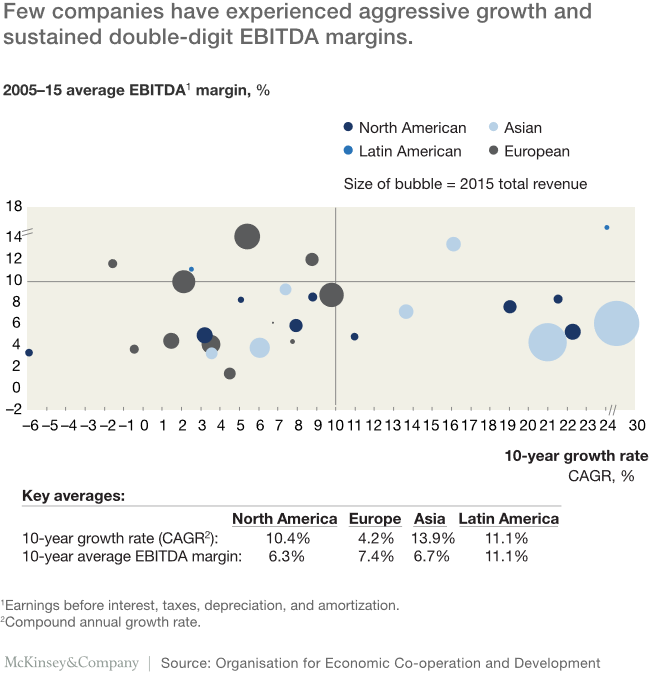
Built & non-Built Environment Professionals Meeting Place
July 12 2016
Historically, the techniques used in the Engineering and Construction of Building were developed since time immemorial, with as always the equivalent problems and setbacks encountered by today architects / engineers.
As a matter of fact, we know now that a pyramid construction was a long and phased process over lengthy stages of time and using many resources.
Modern construction of today’s buildings and / or infrastructure projects like that of the Great Pyramid is very often complex and likely to be built over long period of time using massive manpower, management, etc. How to optimise the lot of the required resources has always haunted the master builders to date with still no specific recipe ready at hand.
We selected this piece of McKinsey & Co. for its genuine approach that could be of interest for the whole MENA region today, particularly that of the GCC’s that is not only at a stone’s throw from Egypt but also 3000 years younger.
By Jose Luis Blanco, Mauricio Janauskas, and Maria Joao Ribeirinho Engineering and construction companies suffer from low margins and relatively low productivity. They can do better.
Infrastructure providers have reason to feel optimistic. The McKinsey Global Institute has estimated that $57 trillion worth of infrastructure investments will be required by 2030 just to keep up with the global economy.1
For engineering and construction companies, that translates into a steady 4 percent annual growth rate. Many industries would be happy with that prospect.
Despite the positive outlook, the sector is struggling with stagnating productivity and low profit margins in many markets. For example, while overall labor productivity in Germany and Britain has risen by almost 30 percent since 1995, construction labor productivity in those countries is up by only about 7 percent over that period (Exhibit 1).

Exhibit 1
What’s more, McKinsey recently analyzed the financial performance of 30 major public engineering and construction companies from 2005 to 2015. Fewer than 15 percent consistently enjoyed double-digit growth and margins for earnings before interest, taxes, depreciation, and amortization (Exhibit 2).

Exhibit 2
These results are not as good as they should be. In essence, engineering and construction companies are professional-services organizations: they use their distinctive know-how to provide specialized forms of business support to clients, from the initial idea to design and execution. Other types of professional services target—and often achieve—30 to 40 percent operating margins. The higher end might be out of reach for engineering and construction companies, but we believe that 20 to 30 percent is possible if they design their operations differently and focus not on utilization (for example, by taking low-margin business to keep resources at work) but on profitability. Clients are looking for higher-quality and more cost-efficient solutions grounded on more productive technologies and methods. Engineering and construction companies able to bring such value-enhancing solutions to clients will likely enjoy better margins.
In this article, we describe the challenges, both internal and external, facing the sector. Then we suggest specific moves that companies in it can make to improve their productivity and profit margins over the long term—and in the process help to build the infrastructure a growing world needs.
Internal challenges
Our work with engineering and construction companies around the world suggests a number of common flaws that impair their performance and ability to innovate. These include the following issues:
Shortfalls in accountability. This problem is a major element in the consistent failure of companies to deliver projects on time and on budget. Organizational structures are frequently unclear, so that no one takes responsibility for results, and financial incentives often are not aligned with project goals.
Talent management. Engineering and construction companies everywhere complain that they can’t find or keep enough people with the right skills. Few can develop talent internally. In addition, many people don’t want to work in difficult or risky regions. These companies, believing that only engineers with long records in the field can succeed, have resisted hiring from outside it—a reluctance that has limited the industry’s ability to reinvent itself and to learn from other sectors. Most engineering and construction companies, for example, lack leading-edge sales capabilities, such as strategic-account management and cross-selling.
Reinventing the wheel. Many functions in the sector are risk averse and reluctant to share best practices. Often, companies run business units and megaprojects as if they were independent companies, without consistent performance management. Each project is treated as if it were one of a kind, so that margins can vary even for comparable undertakings.
Read more on the original McKinsey's.